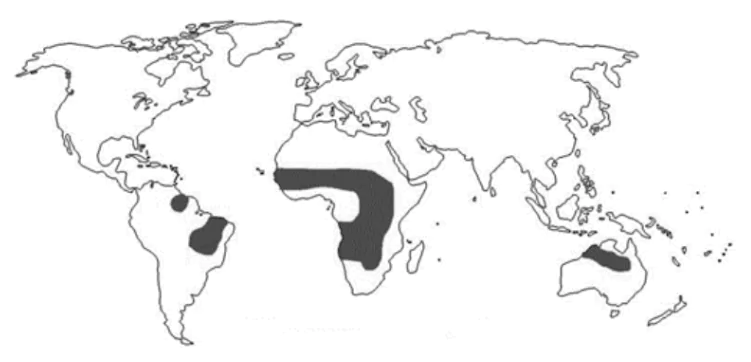![]() April 29, 2024
April 29, 2024
![]() 5793
5793
![]() 0
0
The Savanna or Sudan Climate serves as a transitional zone between equatorial forests and hot deserts, spanning regions like Sudan, West Africa, East Africa, and parts of South America. Characterized by alternating rainy and dry seasons, with temperatures exceeding 18°C, it supports diverse vegetation and wildlife adapted to its unique conditions.
 Temperature: Mean annual temperature is greater than 18°C;
Temperature: Mean annual temperature is greater than 18°C;
| Must Read | |
| Current Affairs | Editorial Analysis |
| Upsc Notes | Upsc Blogs |
| NCERT Notes | Free Main Answer Writing |
The Savanna Climate, with its distinct temperature ranges and seasonal rainfall patterns, fosters a rich ecosystem of tall grasses, deciduous trees, and diverse wildlife. From the iconic elephant grass to umbrella-shaped trees, and from the Masai tribes of Kenya to the grass-eating herbivores and flesh-eating carnivores, the savanna exemplifies nature’s resilience and biodiversity in the face of environmental challenges.
<div class="new-fform">
</div>
Latest Comments